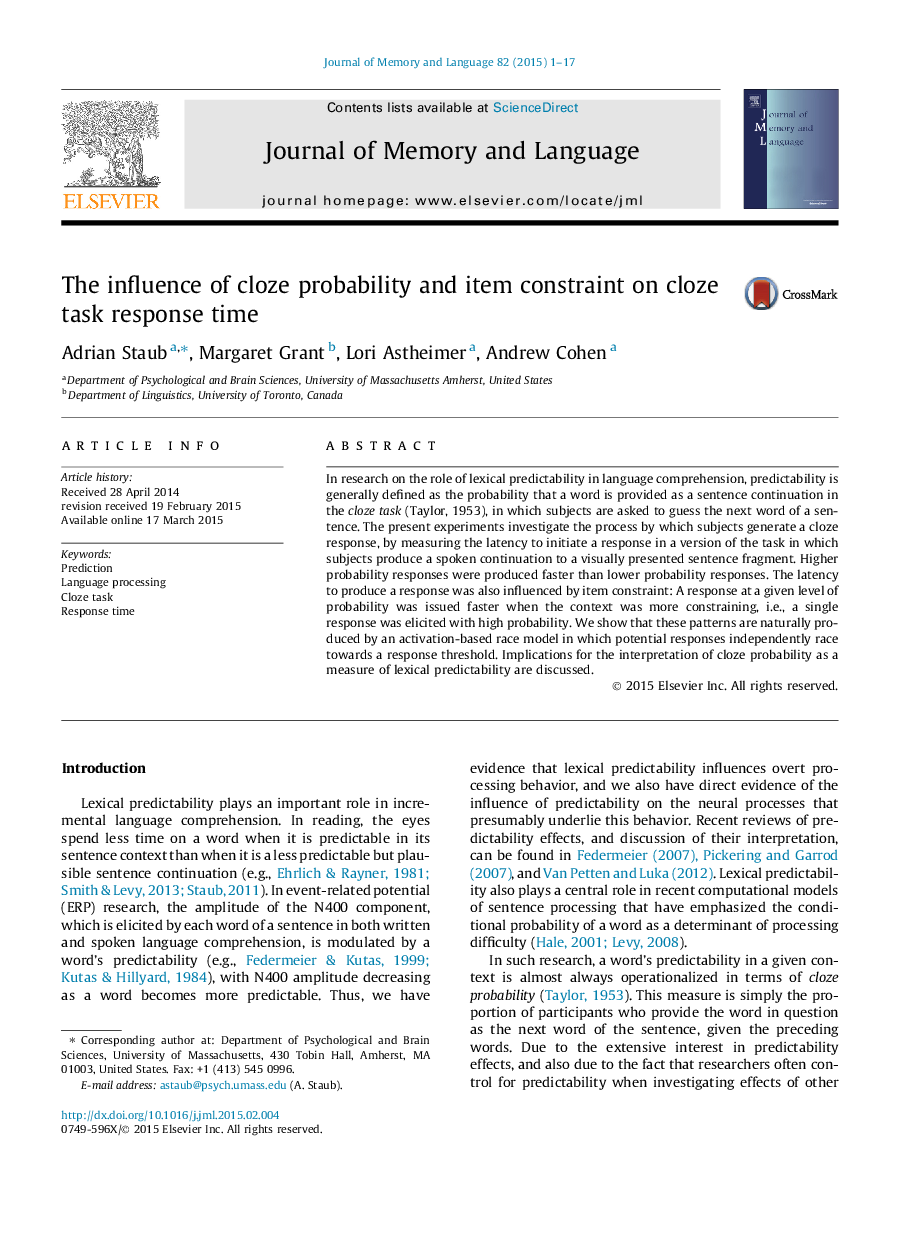| Article ID | Journal | Published Year | Pages | File Type |
|---|---|---|---|---|
| 7297051 | Journal of Memory and Language | 2015 | 17 Pages |
Abstract
In research on the role of lexical predictability in language comprehension, predictability is generally defined as the probability that a word is provided as a sentence continuation in the cloze task (Taylor, 1953), in which subjects are asked to guess the next word of a sentence. The present experiments investigate the process by which subjects generate a cloze response, by measuring the latency to initiate a response in a version of the task in which subjects produce a spoken continuation to a visually presented sentence fragment. Higher probability responses were produced faster than lower probability responses. The latency to produce a response was also influenced by item constraint: A response at a given level of probability was issued faster when the context was more constraining, i.e., a single response was elicited with high probability. We show that these patterns are naturally produced by an activation-based race model in which potential responses independently race towards a response threshold. Implications for the interpretation of cloze probability as a measure of lexical predictability are discussed.
Related Topics
Life Sciences
Neuroscience
Cognitive Neuroscience
Authors
Adrian Staub, Margaret Grant, Lori Astheimer, Andrew Cohen,
